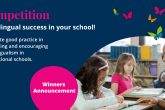
Why do we teach students mathematics in schools?
We teach students science, languages, art, and so on to make them literate, but we are not making every student a poet, an artist, or a scientist. Similarly, we are realistically not preparing every student to be a mathematician. Instead, we teach students to at least prepare them to be mathematically literate.
A mathematically literate student will be able to:
- do, understand, and apply mathematics.
- analyse, reason, and communicate ideas effectively as he/she poses, formulates, solves and interprets mathematical problems in a variety of situations.
How can we achieve meaningful engagement with maths?
Students learn more from our actions as teachers than our words. If we want students to build authentic understanding of the discipline of mathematics, we need to engage them in doing mathematics that includes activities which lead them to notice, wonder, imagine, conjecture, investigate, figure, reason, connect, and prove as they learn new mathematical content.
The new ‘Approaches to Teaching and Learning’ require us to create clearer strategies for facilitating learning experiences in which students are more meaningfully engaged in structured inquiry and greater critical and creative thinking, but how can we achieve this?
There are two main ways that the new Pearson IB Diploma Maths textbooks do this:
1. Students are enthused to do mathematics using a problem-solving/inquiry approach throughout.
Students should be offered the opportunity to be partners in the learning process. Rather than offering them ‘rules’ to follow, they should be introduced to concepts via an inquiry-based approach. They must see for themselves how the author ‘discovers’ a concept and develops it into a block that fits into the whole structure of their mathematical knowledge.
2. Students who plan to use mathematics in its applied form have opportunities to practise modelling and to enhance their problem-solving skills using:
Creative model construction: Given a real-world scenario, students learn to identify a problem, propose a model, test assumptions, refine the model as necessary, fit the model to data if appropriate, and appraise the sensitivity of the conclusions.
Model analysis: Given a model, students learn to work backwards to uncover the implicit underlying assumptions.
Maths is not about following directions, it’s about making new directions
That’s the motto of the team of experienced IB teachers, examiners, workshop leaders and experts in mathematics and educational technology that I worked with to write Pearson’s new IB Diploma Maths textbooks.
These books address students the way their teachers do. One user of the present editions told us: ‘It is the one book I know which explains in the same way I teach!’ With the new syllabus starting in the 2019-2020 school year, the books will offer complete coverage of the syllabus, and here are ten reasons why you need them in your classroom:
Top ten features of the new IB Diploma Maths textbooks
- Students choosing any of the routes, Applications and Interpretations (AI) and Analysis and Approaches (AA) at Standard Level (SL) and Higher Level (HL), will get their own book designed to address their specific needs.
- The new syllabus replaces Math Studies with the AI SL route and the books were designed from scratch to support students choosing to follow this route, using straightforward explanations, detailed examples and solutions.
- Mathematician Paul Lockhart wrote, ‘Many a graduate student has come to grief when they discover, after a decade of being told they were ‘good at math,’ that in fact they have no real mathematical talent and are just very good at following directions’. We offer a problem-solving/inquiry approach throughout in concept introductions, examples, and exercises.
- To facilitate an early initiation of the modelling experience to the new Applications and Interpretations route, both the SL and HL books have a dedicated chapter introducing students to the new approach, as well as examples and problems throughout the books that complement the chapter by offering real life situations for students.
- The AI SL book has been written with students that would previously have taken Maths Studies in mind.
- To facilitate an early initiation of the proof experience to the AA HL, the HL book contains a chapter dedicated to proofs with worked exercises and problems.
- Technology is an integral part of doing mathematics in this day and age. Where appropriate, in the AA book, technology is used to avoid time-consuming tasks, and in the AI books, it is used extensively in all tasks.
- Each book features two chapters dedicated to internal assessment and TOK. The IA chapter offers many ideas for explorations where we try to support students without doing the work for them. The chapter offers ‘triggers’ for ideas that students can research and, with guidance from their teachers, can narrow their choices down to manageable topics. The TOK chapter will support your involvement in the Theory of knowledge course. It is a thought-provoking chapter that will stimulate you to think more deeply and critically about the nature of knowledge in mathematics and the relationship between mathematics and other areas of knowledge.
- Each textbook includes an eBook: a digital copy of the textbook and additional high-quality enrichment materials to promote students understanding of a wide range of concepts and skills encountered throughout each course, including: interactiveGeoGebra applets demonstrating key concepts, worked solutions for all exercises and practice questions, and graphical display calculator (GDC) support.
- There is a dedicated author’s website for you, to help you plan, and where you can share your experiences. This is regularly updated and contains a selection of material such as tests and quizzes, additional exercises, and technology files (Geogebra and GDC).
Find out more
You can take a look inside all of the books on our website or catch up on Ibrahim’s recent webinar where he answered your questions on the new IB Diploma Maths courses.
About the author
Ibrahim Wazir taught Maths at Vienna International School, the American International School, Vienna, and at Webster University, Vienna. He has been an IB Maths Assistant Examiner, Chief Examiner and a member of the Curriculum Committee. He has also run IB workshops for new and experienced teachers.

